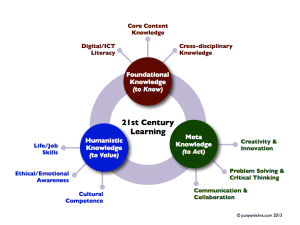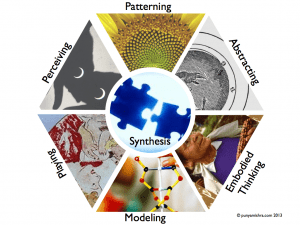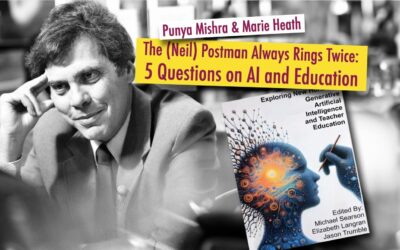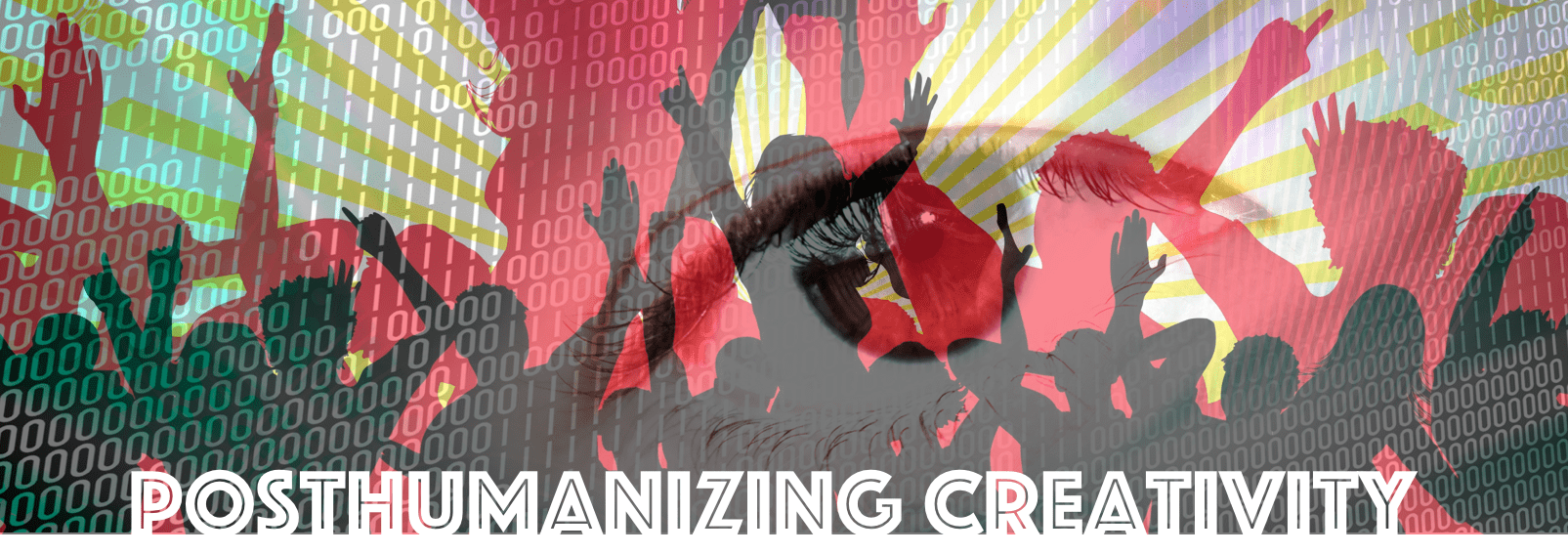As I go around presenting my work around 21st century learning I get requests for some of the visuals I show. In particular, I have been receiving requests for
- Synthesis of 21st Century Knowledge
- 7 trans-disciplinary skills for creativity in the 21st century
If you choose to use these diagrams in your work please credit it as follows: © Punya Mishra | punyamishra.com 2013
So for future convenience, here they are…
Kristen Kereluik and I worked on synthesizing 15 different 21st century frameworks and approaches, a couple of years ago. Till now I have been hesitant to share the diagram we created, mainly because I have, till recently, considered it a work in progress. Now, however, that the paper has been accepted for publication I am ready to share it with the world, since it will now be in print.
If you want more information on this diagram and the work that led to to it, below is a previous version of the work that was presented at the SITE conference back in 2011 (minus the latest diagram).
Mishra, P., & Kereluik, K. (2011). What 21st Century Learning? A review and a synthesis. Paper presented at SITE2011, Nashville TN.
Abstract: The discussion of 21st century skills has become increasingly prevalent in educational discourse and several organizations have developed 21st century frameworks. This papers seeks to compare prominent 21st century frameworks to both provide clarity on what it actually means to teach and learn in the 21st century and to find common themes across frameworks.
This version of the diagram was inspired by a version created by Ruben R. Puentedura, with additional input from Chris Fahnoe. Click to download larger version.
The other diagram that has been receiving some attention is one on 7 trans-disciplinary skills for 21st Century Learning. This diagram builds on the list of skills laid out by Robert and Michele Root-Bernstein in their book Sparks of Genius. Our paper that describes these skills can be found here
Mishra, P., Koehler, M.J., & Henriksen, D. (2011). The Seven Trans-Disciplinary Habits of Mind: Extending the TPACK Framework Towards 21 st Century learning. Educational Technology, 51(2) 22-28.
Abstract: In this article we examine the need for fostering transformative learning, emphasizing the roles that trans-disciplinary thinking and recent technologies can play in creating the transformative teaching and learning of the 21st century. We introduce the Technological, Pedagogical Content Knowledge (TPACK) framework as a starting point for discussing the special kinds of knowledge, skills, and understanding that teachers require in order to become effective classroom mediators of transformative learning experiences. Within this framework, we propose seven cognitive tools needed for success in the new millennium, and describe examples of how teachers can repurpose digital technologies to use these cognitive tools. We explore the implications for research and practice.
Here is the diagram (Click to download larger version):






0 Comments
Trackbacks/Pingbacks